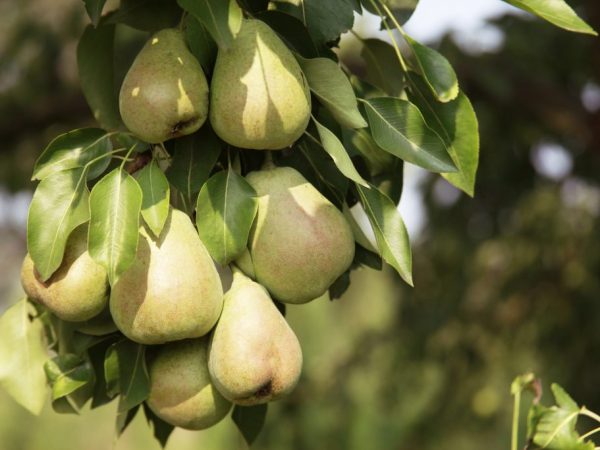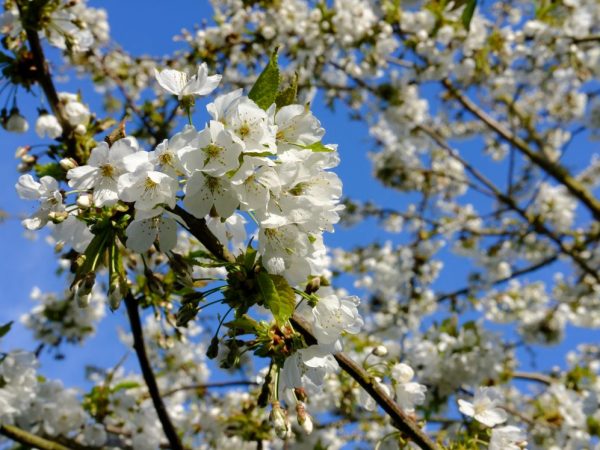Winter varieties of pears
Winter varieties of pears are distinguished by high yield, suitability for conservation and long shelf life. There are many varieties of winter pears, after studying the features of the main ones, it will be possible to determine and choose the best option for planting.

Winter varieties of pears
Characteristics of varieties
Winter varieties of pears have a beautiful appearance, do not deteriorate during transportation, they are grown for sale. Winter varieties of pears have the main feature: they are winter hardiness and a long shelf life of the crop. The fruits are harvested before the onset of ripening, they are collected, packed, stored for about 30-60 days. During this time, they are filled with juices, reach, become ripe, acquire the usual taste and aroma.
Winter pears are sweet, contain a large amount of sugar and vitamins.
Winter pear varieties are stored for six months under good conditions. Pears are used for fresh consumption, for processing into juice, jam, for freezing and drying.
Classification of varieties
According to the shelf life, varieties are divided into 3 types:
- early winter - fruits are stored until January-February;
- winter - stored until the end of March;
- late winter - they are used until the end of spring.
Curé
Curé is an early winter variety with an interesting history of origin. The seedling was found in 1760 by Curé Leroy in the forest by a coincidence.
Trees grow tall, with a dense crown, pears ripen at the end of September, tied in heaps. Their weight is from 160 g to 250 g. At the time of harvest, they are green, when ripe they acquire a lemon hue, sometimes a pink blush appears on them. The flesh of Cure is tender, with a nutmeg aroma, sometimes tart, has a sweet and sour taste, sometimes it turns out without taste. When ripe, the taste appears only slightly. The shelf life of Curé is 30-60 days. Warm weather is important for trees. They bear fruit regularly, their yields reach up to 500-600 kg per tree.
Favorite of Yakovlev
The tree of the Lyubimitsa Yakovleva variety has a large crown, sweet and sour fruits. It gives a harvest from the 6th year, at the beginning of autumn pears are already edible. They are harvested unripe, wrapped in paper and stored in a cool place for about 60 days, where they mature.
Malvina
Winter Malvina is a new type of winter pears. Its fruits are stored until February-March. They are green-yellow with a red blush, weigh 130-170 g.
Artyomovskaya winter
Artyomovskaya variety was bred in Donetsk. It blooms in the second half of December.
The tree has a wide crown. It is unpretentious in care, calmly tolerates drought, heat and frost. The weight of the fruits reaches 250 g, they have a bright yellow color, they have a red blush. Artyomovskaya pear is transportable and stored until February.
Winter decan

Fruits can be stored for a long time
The dean is known under the name "Winter Duchess". This late variety is a powerful tree with a wide branched crown. Decanka bears fruit early and regularly, has large, lumpy fruits that grow on branches in bunches. The skin is smooth, with a beautiful light amber shade.The pulp is fleshy, white, has a sweet taste. The fruits are well stored and transported.
Winter Mlievskaya
Mlievskaya pear has tall trees with a pyramidal crown, which grow well in the northern regions, give a bountiful harvest 4-6 years after planting. Fruit weight - 200 g. The pulp is juicy, sweet with sourness. Winter-hardy pears ripen from October to the new year and are stored until the end of April. The advantages of the variety are resistance to fungal attack, unpretentiousness, frost resistance.
The disadvantages include the large size of the tree.
Pear Glazkova
The Glazkova variety has good taste, it is frost-resistant, has medium fruits, their weight is from 160 to 200 g. The harvest is stored for about 6 months. Ripe fruits have a sweetish taste.
Kyrgyz
Kyrgyz pear originated in Kyrgyzstan. It has large (225-245 g) fruits of a greenish-yellow color, then they turn golden with a red blush.
According to the description, the fruits have a dense pulp, pleasant taste, and a little astringency. They are stored in a cool place until early April. The Kyrgyz pear is winter-hardy, with beautiful fruits, responds well to transportation.
Cuboid
Cuboid pear is a late variety. It bears fruit weighing 150-200 g. The crop is harvested in early October. The fruits at this time are still green with a pink blush. They ripen in December, turn yellow, the blush turns crimson.
The kubarev-shaped variety has an excellent taste, juicy white flesh. Storage is possible until March. The variety is fruitful, winter-hardy and drought-resistant, not afraid of scab.
The first crop is harvested 6-7 years after planting.
Care

The tree needs to be properly cared for
Seedlings grow, develop and produce a rich harvest with proper care. It consists in regular irrigation, fertilizing, loosening the soil, removing weeds, and timely pruning.
Winter pear varieties do not need a lot of moisture. Watering is carried out once a week. One tree needs 12 liters of water. During the ripening period, irrigation is stopped.
Top dressing
The tree is fertilized with all useful substances, organic and mineral fertilizers are applied. Lack of nitrogen affects the growth of the tree: the foliage turns yellow, the ovaries crumble. With a lack of phosphorus, poor formation of fruit buds occurs. With a lack of potassium, the growth of shoots stops. Calcium is responsible for bone formation.
It is useful to feed trees with compost, manure, humus, ammonium nitrate.
Pruning
In the second year after planting, trees are pruned every spring. The growth of the previous year is shortened by a third, while improving the growth of the tree and increasing the yield.
Conclusion
Winter frost-resistant pears are diverse, each species has its positive and negative sides. With proper care, they will surprise you with the taste of the fruit and high yields.


